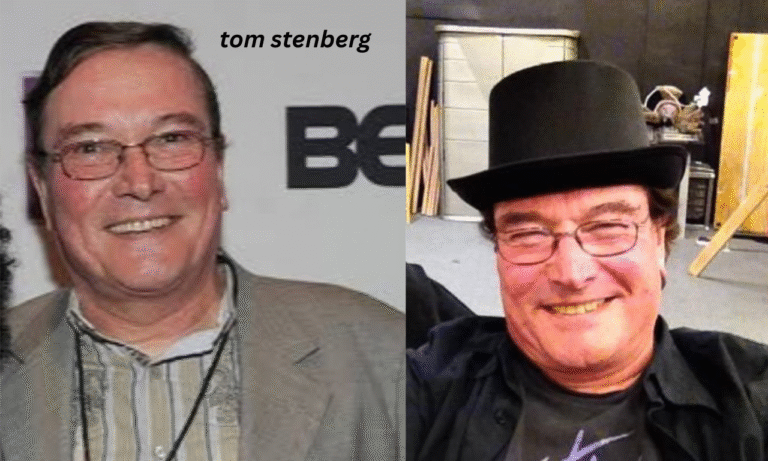I still remember walking into a Staples store for the very first time. I was in high school, and my teacher had assigned us a group project that needed posters, binders, and—of course—those giant packs of colored markers. Back then, I had no idea who was behind this office supply wonderland. Later, I came to learn it was Tom Stenberg, the co-founder of Staples, and that realization made me appreciate the store even more.
The thing is, when we think about entrepreneurs, our minds usually go straight to tech founders—Silicon Valley types with apps and gadgets. But Tom Stenberg built something just as revolutionary in its own way: he made office supplies accessible, affordable, and easy to find. And honestly, his story is packed with lessons that still resonate today.
Who Was Tom Stenberg?
Tom Stenberg wasn’t just some businessman chasing profits. He was an innovator who spotted a gap in the market. In the mid-1980s, office supplies were a mess to buy. Small businesses had to go to multiple shops or rely on overpriced catalogs. Stenberg, after losing his job in venture capital, came up with a big idea: what if there was a superstore for office supplies, just like supermarkets for groceries?
That spark of inspiration became Staples in 1986, co-founded with Leo Kahn. It wasn’t an overnight success—no great story ever is—but within a few years, Staples transformed into the go-to place for everything from printer ink to ergonomic chairs.
What I admire most is that Tom didn’t just build a store; he built a system. He thought about customer convenience, pricing, and scale at a time when “big box retail” was just taking shape.
Lessons From Tom Stenberg’s Journey
I’m not an entrepreneur on Stenberg’s level (yet!), but I’ve always believed that we can learn a lot from people like him. Here are some takeaways that stood out to me:
1. Spot the Gaps No One Else Sees
One of Stenberg’s greatest strengths was seeing opportunity where others saw inconvenience. Office supplies weren’t glamorous, but every business needed them.
My tip: When you’re thinking about a side hustle or business idea, don’t only chase the flashy trends. Sometimes the best opportunities are hidden in everyday problems.
2. Start With What You Know
Stenberg had a background in retail and venture capital. He used that knowledge to build Staples instead of diving into something completely foreign.
From my experience: I once tried launching a small online store in a niche I knew nothing about (don’t even ask about my brief adventure into selling fitness gadgets). It flopped. But when I focused on areas I actually understood—like writing services—I started to see real growth. Stenberg’s story confirmed what I learned the hard way.
3. Think About Scale Early
Staples wasn’t just a mom-and-pop shop. From day one, the plan was to expand. Stenberg imagined Staples not as a single store but as a nationwide chain. That mindset is what separated him from smaller competitors.
It reminds me of when I was freelancing full-time. At first, I took on any project that came my way. But eventually, I realized I needed systems—templates, processes, repeatable workflows—so I could handle more clients without burning out. That’s thinking about scale in a smaller, personal way.
Tom Stenberg’s Legacy
By the time Tom Stenberg stepped away from the company, Staples had become a household name. Even if you never shopped there, chances are you drove past one or saw one in a strip mall.
But his influence goes beyond just office supplies. He showed that brick-and-mortar retail could innovate, that convenience could be just as powerful as price, and that building something practical could still make a huge impact.
For me, his legacy is also a reminder to stay grounded. Entrepreneurship doesn’t always need to look like apps and tech unicorns. Sometimes, it looks like finding a way to sell staplers more efficiently—and there’s nothing wrong with that.
How We Can Apply Tom Stenberg’s Ideas Today
If you’re inspired by stories like Stenberg’s, here are a few ways you can bring his lessons into your own life or work:
-
Pay attention to what frustrates you. If buying office supplies was frustrating in the ’80s, what’s frustrating now? Chances are, that frustration points to an opportunity.
-
Don’t overlook “boring” industries. Office supplies, cleaning products, even storage—there’s innovation happening in every corner. Sometimes the least glamorous markets are the most stable.
-
Build systems, not just products. Stenberg didn’t just sell pens; he built supply chains, stores, and strategies. Think bigger than the single item you’re offering.
Personal Takeaways From Learning About Tom Stenberg
When I first read about Tom Stenberg, I realized something important: I’d always thought entrepreneurship had to be shiny and groundbreaking. But Stenberg’s story made me see that consistency, accessibility, and practicality can be just as powerful.
For example, when I started creating content online, I used to obsess over making every post go viral. But over time, I realized it’s not about the one-hit wonders—it’s about showing up consistently, just like Staples showed up for every small business that needed a box of paper clips on short notice.
Wrapping It Up: Why Tom Stenberg Still Matters
Tom Stenberg may not be a household name like Steve Jobs or Elon Musk, but his impact is undeniable. He saw a problem, solved it in a smart way, and left behind a legacy that still shapes how we shop today.
His story inspires me to look at everyday challenges differently and reminds me that you don’t need to reinvent the wheel—you just need to make it roll more smoothly.

